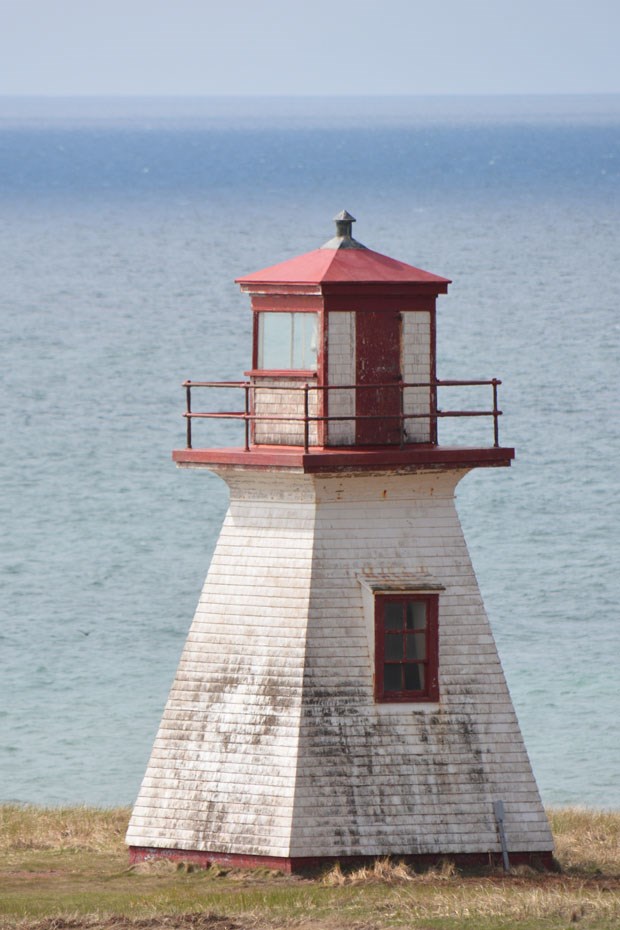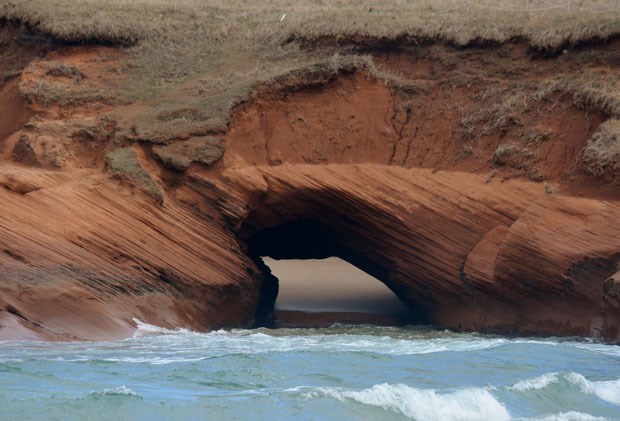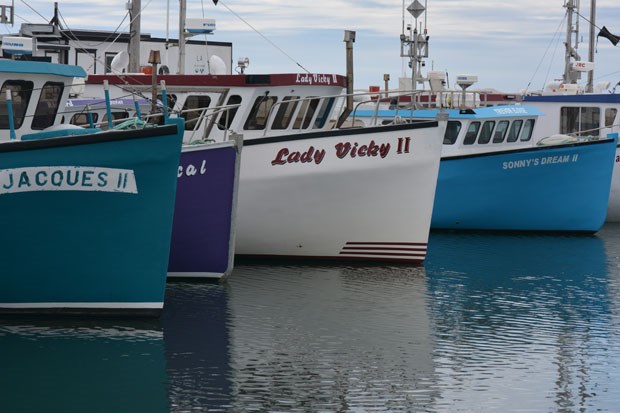It is the middle of the night. I am bundled up against the cold and damp and down at the main wharf on Grande Entrée watching the lobster boats slip from the harbour in an organized procession. Their bright guiding lights illuminate the dark and rippled sea, as they churn out past the breakwater. I give the departing boats a jaunty wave and they blow their fog horns, likely wondering what brings a sane man out at this ungodly hour. For those residents of the Iles de la Madeleine who make their living from the bountiful sea it is simply the business, a race to reach the fishing grounds by dawn where they will empty their traps, then re-bait and re-set.
The Madeleines are a slender chain of islands in the shape of a fishhook set out in the middle of the Gulf of St. Lawrence. Six of its seven populated islands are linked by causeways and sand dunes, some 88 kilometres in length, while the seventh, Entry Island, is accessible only by boat. For centuries the islands were a destination for Mi’kmaqs in search of walrus meat. They named the archipelago “Menagoesenog,” meaning islands brushed by the waves. Indeed, it is impossible to escape the salty winds and constant crash of the sea.
These are breezy islands of fishing villages, dunes and lagoons, and miles of sandy beaches. Lush, green hills contrast sharply with the rusty red, sea-sculpted, sandstone cliffs that jut precipitously up from an aqua sea. It is a treeless landscape, with winding roads hedged by lopsided telephone poles and scattered houses. Lobster creels are piled high beside the brightly coloured wooden homes painted vibrantly in purples, yellows and reds, giving the place an ethereal charm.

Equally as colorful and enchanting are the locals, the Madelinots. Nothing captures the distinctive character of each of the islands like a trip from one end of the archipelago to the other. The island’s remoteness has preserved its history and charm. Even though they are part of Quebec, the islands are closer geographically to P.E.I., Nova Scotia and Newfoundland and, in practical terms, they are an amalgam of all their neighbours.
At the Gourmande de Nature cooking school, I enjoy a hands-on lobster lesson under the tutelage of chef and owner Johanne Vigneau – and I believe I’ve earned this sea-to-table experience after my nighttime escapades with the boats. We are taught by our efficient and patient experts how to get every ounce of the lobster meat out of the shell and several delicious recipes are the result, including lobster salad bruschetta, lobster bisque and lobster risotto.
On the island of Havreaux-Maisons a traditional smokehouse, Fumoir d’Antan, has been smoking herring for three generations. Once an important export industry, because of the decline of the herring fishery this is the last of its kind. Brothers Benoit and Daniel Arseneau smoke 30,000 pounds of herring a year in the traditional way, brined and hung high over smouldering piles of birch and maple.
Also worth a taste are the delectable, award winning cheeses at Fromagerie Pied-de-Vent. If the cheese and smoked fish make you thirsty, hop south to Havre-Aubert for a beer at the Madeleine’s lone microbrewery, À l’abri de la Tempête, which is housed in a former fish factory. Try the Corps Mort, (Dead Body), made from barley that spends time in the herring smoke house.

Also on this southernmost island, stroll the street in La Grave, one of Québec’s most picturesque seaside villages. The strip of historic shingled buildings on the water is home to artisans, jewellers, and art galleries, as well as a maritime museum, aquarium and, a variety of restaurants. At Café de la Grave, while being entertained by traditional Acadian music, I bravely order seal meat poutine – interesting but fishy.
The most intriguing shop on the strip is Les Artisans du Sable, where a unique moulding process allows the gallery to create sculptural objects out of natural sand from the islands. Where I usually bring home a small vial of sand from the beachy places I visit, this time I carry the souvenir of a sand-sculptured clock. After-all, the locals have a saying on the Iles de la Madeleine, “On these islands we don’t have the hour, but we have the time.” Indeed, when visiting you will want to take your time – it is time well spent.
Travel Writers’ Tales is an independent newspaper syndicate that offers professionally written travel articles to newspaper editors and publishers. To check out more, visit www.travelwriterstales.com



